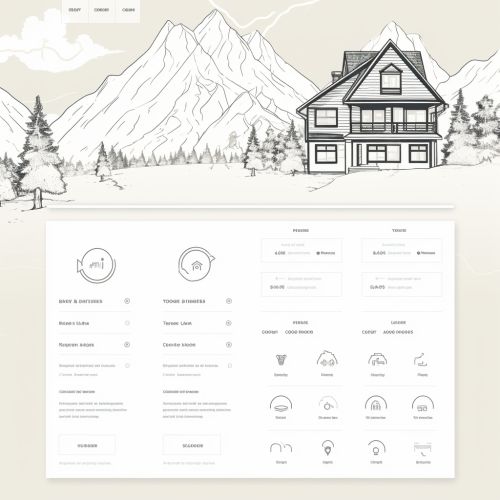Website wireframe
Overview
A website wireframe is a visual guide that represents the skeletal framework of a website. Wireframes are created for the purpose of arranging elements to best accomplish a particular purpose. The purpose is usually being informed by a business objective and a creative idea. The wireframe depicts the page layout or arrangement of the website's content, including interface elements and navigational systems, and how they work together. The wireframe usually lacks typographic style, color, or graphics, since the main focus lies in functionality, behavior, and priority of content. In other words, it focuses on what a screen does, not what it looks like.
Purpose and Functionality
Wireframes can be pencil drawings or sketches on a whiteboard, or they can be produced by means of a broad array of free or commercial software applications. Wireframes are generally created by business analysts, user experience designers, developers, visual designers, and by those with expertise in interaction design, information architecture and user research.
Wireframes focus on: - The range of functions available - The relative priorities of the information and functions - The rules for displaying certain kinds of information - The effect of different scenarios on the display
The website wireframe connects the underlying conceptual structure, or information architecture, to the surface, or visual design of the website. Wireframes help establish functionality and the relationships between different screen templates of a website. An iterative process, creating wireframes is an effective way to make rapid prototypes of pages, while measuring the practicality of a design concept. Wireframing typically begins between “high-level structural work—like flowcharts or site maps—and screen designs.” Within the process of building a website, wireframing is where thinking becomes tangible.
Types of Wireframes
Wireframes may be utilized by different professional roles. Two common types of wireframes are:
Low-Fidelity Wireframes
Low-Fidelity Wireframes are often more abstract and tend to use boxes and lines to represent pictures and text. Low-fidelity wireframes can be quickly produced and easily changed but may require explanation to be understood and are not easily translated into working prototypes.
High-Fidelity Wireframes
High-Fidelity Wireframes are often much closer to the final design with more detail and functionality. They take longer to create and are usually used in later stages of design. They can be used to create a working prototype of the website.
Tools for Wireframing
There are many tools available for creating wireframes. These range from pen and paper to specialized software. Some popular wireframing tools include Balsamiq, Axure, and Sketch. These tools often include features for creating both low and high-fidelity designs.
Benefits of Wireframing
Wireframing is a valuable tool for communicating ideas and enabling understanding between the technical and non-technical members of a web development team. It can also be used to get feedback from users or stakeholders before a project gets too far into the development phase. Some benefits of wireframing include:
- Clarifying website features: By creating a wireframe, all parties involved can come to an agreement on what the website will include and where those features will be placed. - Determining website functionality: A wireframe can help to map out how users will interact with the website, and how different elements of the site will be connected. - Identifying ease of use: Wireframes can help identify how easy or difficult it will be for users to accomplish their goals on the site. This can help guide decisions about the site's layout and design.
Limitations of Wireframing
While wireframing is a valuable tool in website design, it is not without its limitations. Some potential limitations include:
- Lack of detail: Wireframes are intentionally simple and may not convey the full visual richness of the final website. - Misinterpretation: Because of their simplicity, wireframes can sometimes be misinterpreted by clients or stakeholders who are expecting a more polished, finished design. - Time-consuming: Creating a detailed wireframe can be a time-consuming process, particularly for complex websites.
See Also

